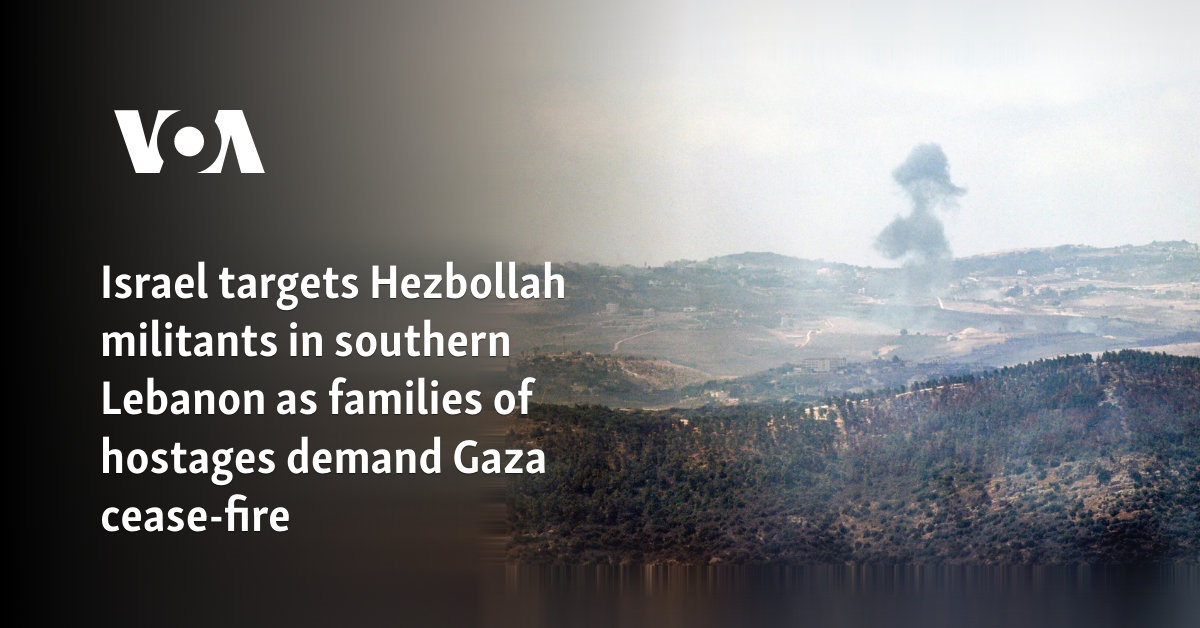Cease-Fire Negotiations Between Israel and Hamas: A Critical Juncture
As negotiations for a potential cease-fire between Israel and Hamas reach a critical juncture, the human cost of the ongoing conflict continues to escalate alarmingly.
Recent Escalations and Tragic Incidents
The Israeli military reported a tragic incident in Beit Hanoun, northern Gaza, where an ammunition explosion claimed the lives of five Israeli soldiers, while eight others sustained injuries. This incident marks one of the deadliest episodes in Israel’s ongoing military operations. The toll has continued to rise, with another four soldiers killed in Gaza on Sunday alone. Simultaneously, Hamas has demonstrated its capacity for offensive operations, firing 20 rockets into Israel over the past two weeks despite the ongoing hostilities that have persisted for 15 months now.
Efforts Toward a Cease-Fire
Intense negotiations, brokered by the United States, Qatar, and Egypt, are underway as the parties strive to finalize a cease-fire agreement. Reports indicate that a deal may be within reach, with the proposed agreement focusing on the release of 33 hostages—comprised of children, women, elderly men, female soldiers, and humanitarian cases—from the 98 individuals abducted since October 7, 2023. In exchange for the hostages, Israel would release hundreds of Palestinian prisoners, including notable detainees. The initial phase of the deal is set to span 42 days, and humanitarian aid to Gaza would play a crucial role in the negotiations.
Hostages and Prisoner Exchanges
An Israeli official revealed that the majority of the hostages abducted during the devastating October 7 attacks remain alive. The proposed arrangement stipulates that for every female hostage released, Israel would grant freedom to 50 Palestinian prisoners; conversely, for every child or woman released, 30 prisoners would be set free. This delicate balancing act underscores the complexities of the negotiation process.
Humanitarian Crisis in Gaza
In an unprecedented concession, the prospective agreement would allow approximately 1 million displaced Palestinians to return to northern Gaza. While this measure could help alleviate the dire humanitarian crisis affecting the region, security experts have voiced concerns that it may provide Hamas with the opportunity to regroup and fortify its position. Retired Israeli Defense Forces (IDF) Brigadier General Amir Avivi expressed his concerns in a recent interview with the Wall Street Journal, stating, “The pace at which Hamas is rebuilding itself is higher than the pace that the IDF is eradicating them.” He underscored that while difficult concessions might be unavoidable, the war cannot conclude as part of any agreement.
International Perspectives and Urgency
President Joe Biden addressed the ongoing developments during a farewell foreign policy speech at the State Department, expressing cautious optimism regarding the potential agreement. “We’re on the brink of a proposal laid down months ago finally coming to fruition,” Biden stated. “We’re pressing hard to close this—free the hostages, halt the fighting, secure Israel, and ensure humanitarian aid to Gaza. Palestinians deserve peace, Israel deserves peace, and we are working urgently to finalize this deal.”
National Security Adviser Jake Sullivan echoed this sentiment, emphasizing the need to strike a deal promptly. “The parties are right on the cusp of being able to finalize this agreement,” Sullivan declared. “The next hours and days will determine whether we can truly bring it to completion.”
Collaboration Between the U.S. and Israel
On Sunday, President Biden and Israeli Prime Minister Benjamin Netanyahu engaged in discussions regarding the proposed cease-fire during a phone call, showcasing the tight-knit collaboration between the U.S. and Israel. U.S. envoy Brett McGurk has been stationed in Qatar, dedicating his efforts to finalizing the intricate details of the agreement.
Casualties and Length of the Conflict
Since the beginning of the conflict, the Israeli military claims to have eliminated approximately 17,000 Hamas militants and detained thousands more. Prior to the outbreak of hostilities, Hamas was said to have a force of 30,000 fighters organized into 24 battalions. While the IDF insists that much of this military infrastructure has been dismantled, Hamas persists as a formidable presence, exerting control over significant areas within Gaza. The Hamas-run Ministry of Health has reported devastating casualties, claiming that the conflict has resulted in the death of 46,000 Gazans—figures that remain contentious and contested by various parties.
Internal Debate and Challenges
The proposed cease-fire has incited significant debate within Israel’s political sphere. Although most of Prime Minister Netanyahu’s coalition supports the deal as a necessary step toward securing the release of hostages, dissenting voices from right-wing factions strongly oppose it. Critics express concerns that a temporary pause in hostilities could afford Hamas the opportunity to regroup and rearm, thus undermining Israel’s long-term security objectives.
Looking Ahead: A Potential Breakthrough or Temporary Relief?
As the toll of the conflict becomes increasingly unsustainable and diplomatic efforts intensify, the coming days will hold significant implications for the region’s stability. Whether this potential breakthrough marks a genuine step toward peace or simply signifies a fleeting respite in a protracted war remains an open question. The international community remains watchful, mindful of the precarious balance between humanitarian needs and security concerns as negotiations unfold.
